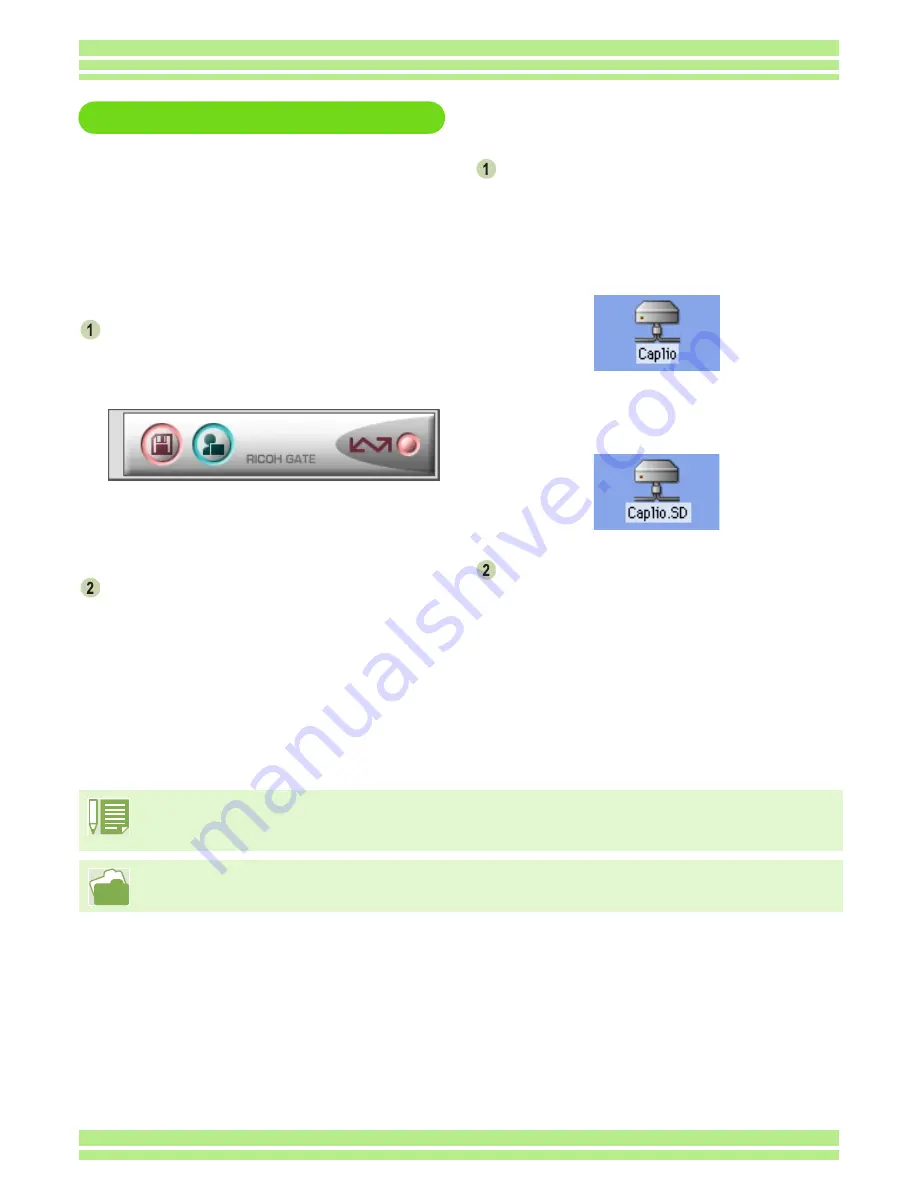
141
Chapter 2 / Section 2 Downloading Images to a Computer (For Macintosh)
For Mac OS 8.6 to 9.2.2
In Mac OS 8.6, Mac OS 9.1, or earlier versions,
a folder called [Caplio] is created inside the root
directory on the start-up disc [Macintosh HD].
In Mac OS 9.1 to 9.2.2, a folder called [Caplio] is
automatically created inside the [Documents]
folder on the start-up disc [Macintosh HD].
Connect your camera to the computer using
the USB cable.
The camera turns on, RICOH Gate La starts and the
RICOH Gate La window appears.
RICOH Gate La starts and the RICOH Gate La
window appears.
Image Transfer begins automatically.
Click on the [File] menu and select [Quit].
RICOH Gate La closes.
Using the Mounter
You can transfer images using the Mounter.
Connect your camera to the computer using
the USB cable.
Your camera turns on.
When an SD Memory Card is not loaded, the [Caplio]
icon is displayed and you can view the image files
stored in internal memory.
When an SD Memory Card is loaded, the [Caplio.SD]
icon is displayed and you can view the image files
stored on the SD Memory Card loaded.
Double-click the displayed icon.
It can be handled in the same way as a normal drive.
If you double-click the icon, a folder called [DCIM] is
displayed and a folder called [100RICOH] within that
folder is displayed.The image files you shot are inside
the [100RICOH] folder.
Drag and drop the file and then copy to the hard disc.
• If you want to start RICOH Gate La when the camera is not connected, double-click the [RICOH Gate La] icon
in the Control Panel folder, which is inside the System Folder.
• The downloaded images are saved in folders with the date of each shot, inside the [Caplio] folder.
For how to change the Save Destination Folder, see p.144.













































